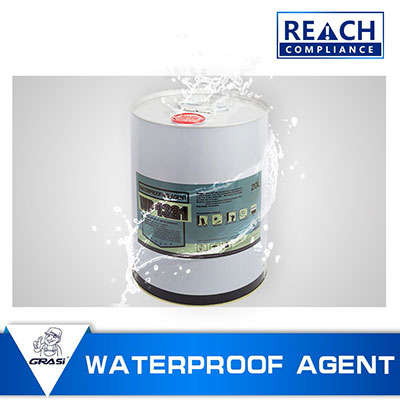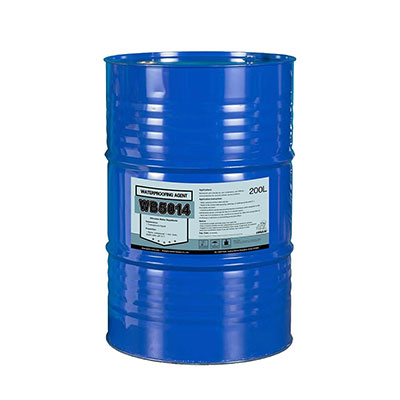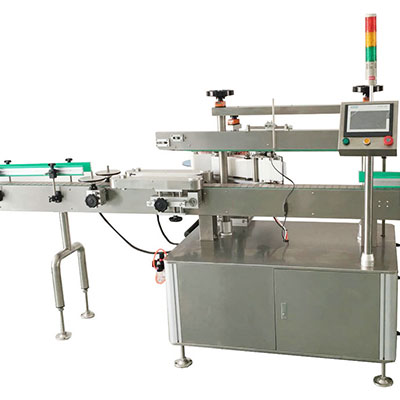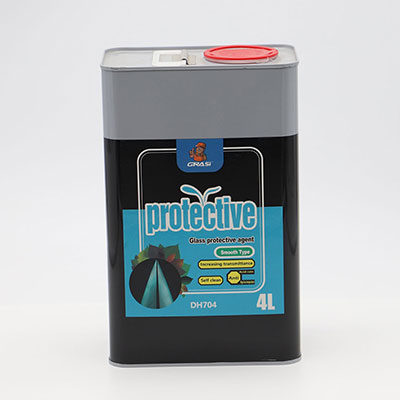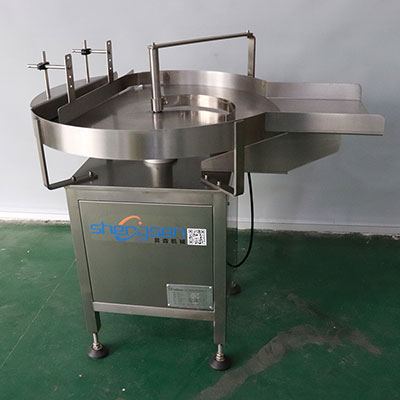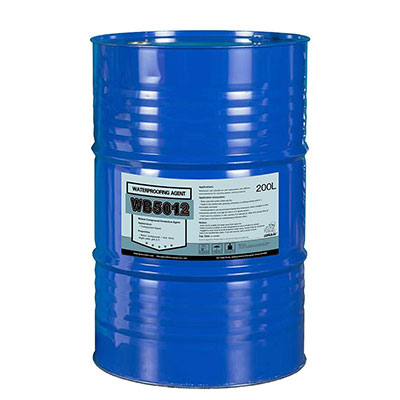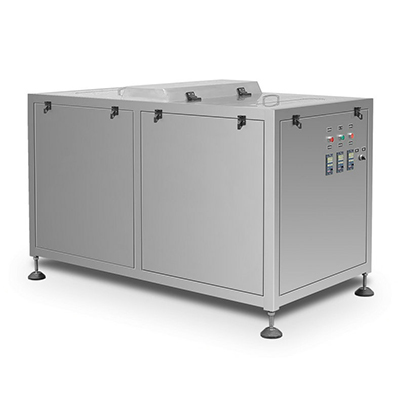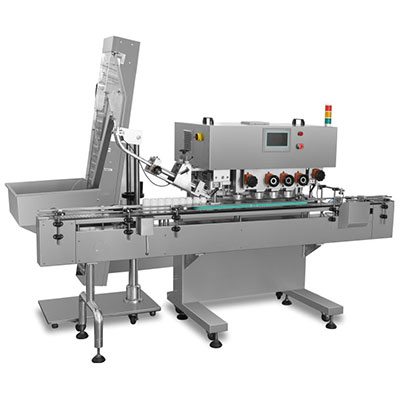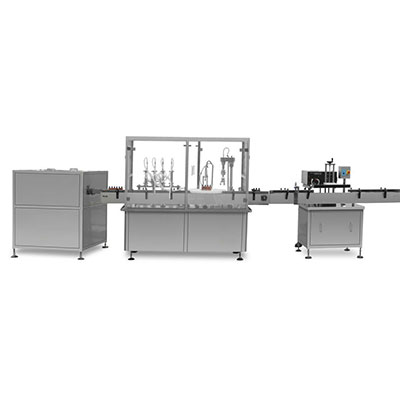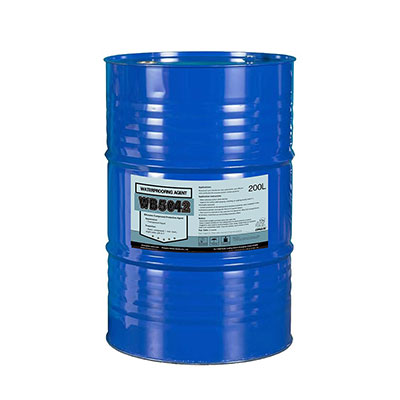2500 Ton Dry Process Cement Plant
This dry process cement plant is designed to produce 2500 tons of cement clinker everyday. Its φ4×60m rotary clinker incorporates a preheating and decomposing system made up of a decomposition furnace and a five-stage cyclone preheater.
Production Processes
1. Limestone crushing, conveying, and stacking
The limestone crusher adopted for the dry process cement production line offers capacity between 500t/h and 600t/h, on the condition that the feeding material size is no more than 1500mm, and the discharging particle size is no more than 75mm.
The crushed limestone is delivered by a belt conveyer to a Φ80m round-shaped stockyard for homogenization and temporary storage. The stockyard has storage capacity of 34100t. An 800t/h cantilever stacker and a 500t/h bridge-type reclaimer are available for limestone recovering and reclaiming continuously.
After pre-homogenization, the limestone is conveyed to raw material batching station by belt conveyer again.
2. Auxiliary raw material storage, crushing, and transportation
Auxiliary raw materials like sandstone, iron ore, etc. are transported by trucks to an open storage yard. The sandstone stockyard has capacity of 5100 tons, and the size is 60m×20m. The iron ore stockyard capacity is 2730t, and the size is 32 m×20m.
Our dry process cement plant is fitted with our PC1609 hammer crusher for auxiliary material crushing. When the feeding material size is no more than 600mm, and the discharging particle size is no more than 25mm, the crusher offers capacity between 50t/h and 70t/h. The crushed sandstone and iron ore materials are then delivered by belt conveyers to their independent storage silos in the raw material batching station.
Other auxiliary materials like coal ash is transported by bulk material transporting trucks into the plant, and then automatically unloaded and delivered to its storage silo in the batching station via a dedicated pipeline system.
3. Raw material batching station
The station includes four φ12m×25m storage silos for limestone, sandstone, iron ore, and coal ash, and the storage capacity is 2200t, 1600t, 2200t, and 770t, respectively. Each silo comes with a weight feeder at the bottom, so as to feed materials in accordance with the desired proportion. The proportioned materials are finally transferred to the vertical grinding mill via rubber belt conveyers.
4. Raw mix grinding, and waste gas treatment
The 2500ton dry process cement plant adopts the MLS3626 vertical grinding mill to grind the raw mix. The mill can use the waste gas from the preheating system as the heat source for material drying. Its production capacity is 185t/h, on condition that the 90% feeding material size is no more than 75%, the discharging material size is 80μm, the screen residue of square mesh sieve is less than 12%, the feeding material water content is less than 8%, and the discharging material size is less than 1%.
After grinding, the raw mix is classified by an ultra-fine powder separator, and then mixed with the dust collected by the humidifier tower and the electrostatic precipitator. Finally, the mixture is delivered to the raw mix homogenization silo by the bucket elevator and air slide conveyer. The waste gas generated during grinding process is treated by the electrostatic precipitator before discharging.
5. Raw mix homogenization, and feeding raw mix into preheater
The Φ18m ×50m CP raw mix homogenization silo for this range of dry process cement plant has effective storage capacity of 9000 tons. Through the raw mix distributor at the silo top, the powdered raw mix is sent into the silo in a multipoint way. Then, it is discharged quantitatively into a weighing bin with weight and flow control devices at the bottom. Finally, the measured raw mix is fed into the preheater at the kiln tail by bucket elevators.
6. Cement clinker calcining and storage
The clinker calcining system of our dry process cement production line is mainly made up of an online, low pressure loss five-stage preheater, RF5/2500 decomposition furnace with decomposition rate over 90%, and LBT32216 Φ4.0×60m new type grate cooler.
(1) After calcining, the cement clinker is firstly cooled by the grate cooler. Then, it is sent into 2 round stockyards with size of φ18×40m, and capacity between 2 tons and 10,000 tons, by bucket chain elevators and pan elevators. After that, the clinker is discharged and transferred via a material discharging system and a rubber belt conveyer respectively, and is finally sent into the cement clinker storage area or cement batching station.
(2) The hot air at the high temperature end of the grate cooler is fed into the decomposition furnace by three sections of air duct, to serve as the combustion gas. The gas at the medium-temperature section is brought into coal mill to serve as the heat source for material drying. While the waste gas from the tail end of the cooler is treated by an electrostatic precipitator firstly, and then discharged via the chimney. The discharged gas has dust concentration less than 100mg/m3.
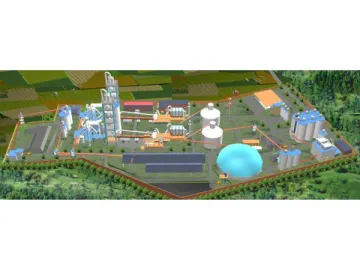
7. Raw coal storage and conveying; pulverized coal preparation and delivering
The raw coal is transported by trucks into a crane-incorporating storeroom for storage and pre-homogenization. The storeroom includes two silos, which reduces the traveling distance of cranes, and also enables storage of raw coal materials with different grade. The silo bottom is available with weigh feeder for material weighing and feeding before delivering to the coal mill.
The MPF1713 coal mill for our dry process cement plant can be installed outdoors. It offers production capacity of 20t/h, when the feeding material moisture content is no more than 10%, pulverized coal moisture content is no more than 1%, the feeding material size is no more than 50mm, pulverized coal fineness is 80μm, and the screen residual of square mesh sieve is 11%.
The pulverized coal is classified by a coal powder separator. The qualified coal powder is collected by an air tank pulse bag filter, and then delivered to one of the two storage silos by screw conveyers. The waste gas is filtered before discharging.
The coal powder storage silos have a weighing system at the bottom, so as to weigh the coal powder before feeding it into kiln head and decomposition furnace for burning.
8. Slag conveying and drying, as well as gypsum crushing and conveying
Slag in the open storage area is fed into bucket elevators by forklift trucks, and then is delivered to φ2.4×18.350m dryer. The drying equipment has processing capacity no less than 30t/h, if the moisture content of the feeding material and discharging material is 20% and 1.5%, respectively.
Gypsum stored in a 4000t open storage area is fed into the PFC-1609 impact hammer crusher by heavy duty plate feeders. The crushing equipment offers capacity between 50t/h and 70t/h, on condition that the feeding and discharging material size is no more than 600mm and 25mm, respectively. The crushed gypsum is delivered to gypsum batching silo for storage by bucket elevators and belt conveyers.
9. Cement grinding, conveying, and storage
The cement batching station includes four silos that for the clinker, gypsum, limestone, and slag respectively. The silo capacity is 2000t, 800t, 900t, and 400t respectively. The clinker silo size is φ10m×22m, and the other three silo sizes are all φ8 m×22m.
At the bottom of each silo, there is a weigh feeder available for feeding materials according to desired proportion. Around the clinker silo, bulk material handling equipment is available for outgoing-transportation of the bulk cement clinker.
After discharged in proportion, the four kinds of material will be conveyed by a belt conveyor to two closed-circuit cement grinding systems. Each system composed of a ball and a high efficiency powder separator has production capacity of 75t/h, if the cement specific surface area is between 3200cm2/g and 3400cm2/g.
After ball mill grinding, the materials are delivered via bucket elevators into the separator for classification. The coarse powder will be recycled for further grinding. The qualified cement will be collected by an air tank pulse bag filter, and then will be delivered into a φ15 m×34m cement silo by air slide conveyors and bucket elevators. There are 8 cement silos in total, and each has storage capacity of 5300t.
To ensure environmental friendliness, our 2500 ton dry process cement plant is designed with a highly efficient air tank pulse bag filter to process the waste gas generated during cement grinding.
Discharged from the discharging unit at the cement silo bottom, the finished cement is transferred by the belt conveyor, bucket elevator, and the air slide conveyor to the cement packaging workshop or bulk cement storeroom.
In the packaging workshop, there are two sets of rotary cement packaging machines, each of which comes with eight filling holes, and packaging capacity of 90t/h. Bagged cement can be transported to destinations directly, and can also be delivered to an 84m×30m finished product storeroom with capacity of 6000t for storage.
The bulk cement storeroom is available with two sets of bulk cement handling equipment, thus facilitating truck transportation.
Equipment List| Serial No. | Purpose | Equipment Name | Type / Specifications | Quantity | Annual Utilization Rate (%) | Remark |
| 1 | Limestone crushing | Capacity: 500-600t/h Feeding material size (max.) ≤1500mm Discharging material size ≤75mm (90%) | 1 | 21.58 | ||
| 2 | Limestone pre-homogenization and stacking | Stacker and reclaimer | Type: YDQ600.500.80 Stacker size: Ф80m Stacking capacity: 800t/h Reclaiming capacity: 500t/h | 11 | 27.5836.77 | |
| 3 | Raw material grinding, and waste gas treatment | Type: Rolling millCapacity: 185t/h Feeding material size: ≤75mm Discharging material size: 80μmScreen residue: 12% Feeding material moisture content: ≤8% Discharging material moisture content: < 1% | 1 | 85 | ||
| High temperature draught fan / Electrostatic precipitator (kiln tail) | Fan Type: W6-2×20 No31.5FAirflow: 420,000m3/hAir pressure: 7500Pa Electrostatic precipitator type: WDC171-3Airflow: 420,000m3/h Inlet air temperature: 110~150℃ Inlet dust content ≤80g/Nm3Outlet dust content ≤50mg/Nm3 | 1 | 85 | |||
| 4 | Cement clinker calcining | Five stage cyclone preheater, and decomposition furnace | Capacity: 2500t/d | 1 | 85 | |
| Size: Φ4.0×60m production capacity: 2500-2800t/d Rotary speed: 0.41~4.07r/min Inclination: 4% | 1 | 85 | ||||
| Flow-control type grate cooler | Capacity: 2500t/d Effective area: 63.2m2Feeding material temperature: 1400℃ Discharging material size: 65℃ ambient temperature Model: WDJ105-3 | 1 | 85 | |||
| Electrostatic precipitator (kiln head) | Airflow: 315000m3/h Inlet air temperature: 200~250℃ Inlet dust content: ≤30g/Nm3 Outlet dust content: ≤50mg/Nm3 | 1 | 85 | |||
| 5 | Raw coal pre-homogenization, and stacking | Cantilever stacker / Bridge type scraping reclaimer | Stacker capacity: 200t/hReclaimer capacity: 120t/h | 11 | 2838 | |
| 6 | Coal pulverization | Grinding capacity: 18t/h Size: Φ2.8×(5.75 2.25)m Feeding material size: ≤25mm Discharging material size: 80μm Screen residue: ≤10~12%Feeding material moisture content: ≤10% Discharging material moisture content: ≤1% | 1 | 60.73 | ||
| 7 | Cement grinding | Φ3.8×13m closed circuit grinding mill Feeding material size: ≤20mm Discharging material size: 3200~3400cm2/g Grinding capacity: 75t/h | 2 | 68.5 | ||
| 8 | Cement packaging | Packaging capacity: 90t/h Average measurement precision: 50kg ( 0.3kg / -80g) | 2 |
Related Names
Cement Machinery Manufacturer | Cement Engineering Projects Contractor | Cement Making Plant
Links:https://www.globefindpro.com/products/45319.html
-
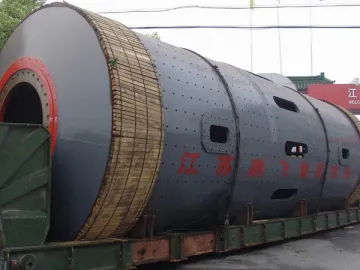 Cement Grinding Mill
Cement Grinding Mill
-
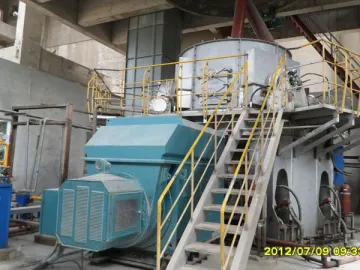 Vertical Pre-Grinding Mill
Vertical Pre-Grinding Mill
-
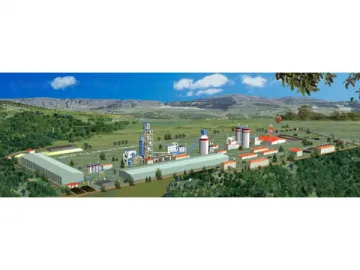 1500 Ton Cement Processing Line
1500 Ton Cement Processing Line
-
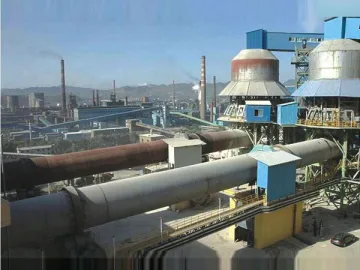 Non-ferrous Metallurgical Industry Rotary Kiln
Non-ferrous Metallurgical Industry Rotary Kiln
-
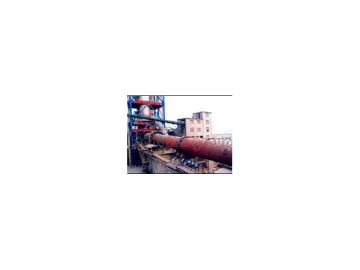 Kaolin Rotary Kiln, Bauxite Calciner, Zinc Oxide Calciner
Kaolin Rotary Kiln, Bauxite Calciner, Zinc Oxide Calciner
-
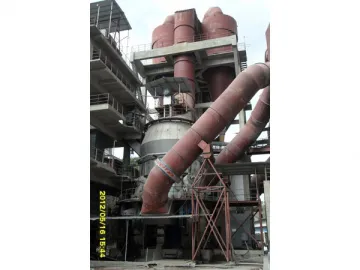 Vertical Raw Mill
Vertical Raw Mill
-
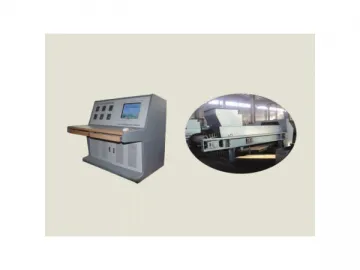 Material Feed Weigher
Material Feed Weigher
-
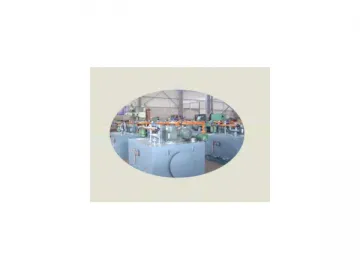 Lubrication System and Mill Control Cabinet
Lubrication System and Mill Control Cabinet
-
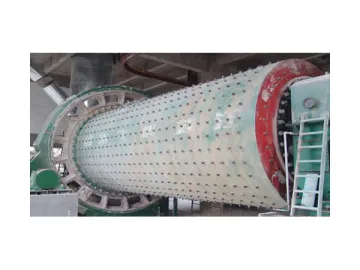 Raw Material Mill
Raw Material Mill
-
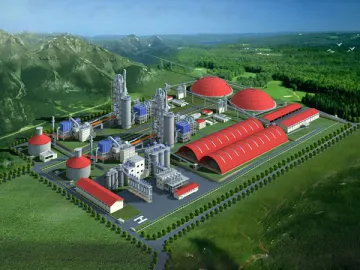 5000 Ton Dry Process Cement Plant
5000 Ton Dry Process Cement Plant
-
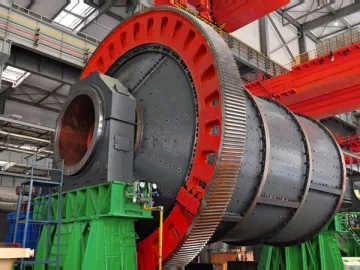 Mining Mill
Mining Mill
-
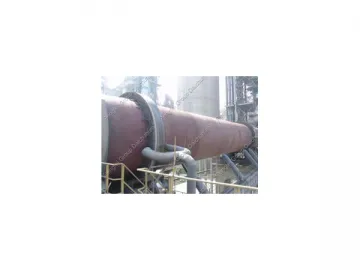 Oxidized Pellet Rotary Kiln
Oxidized Pellet Rotary Kiln
